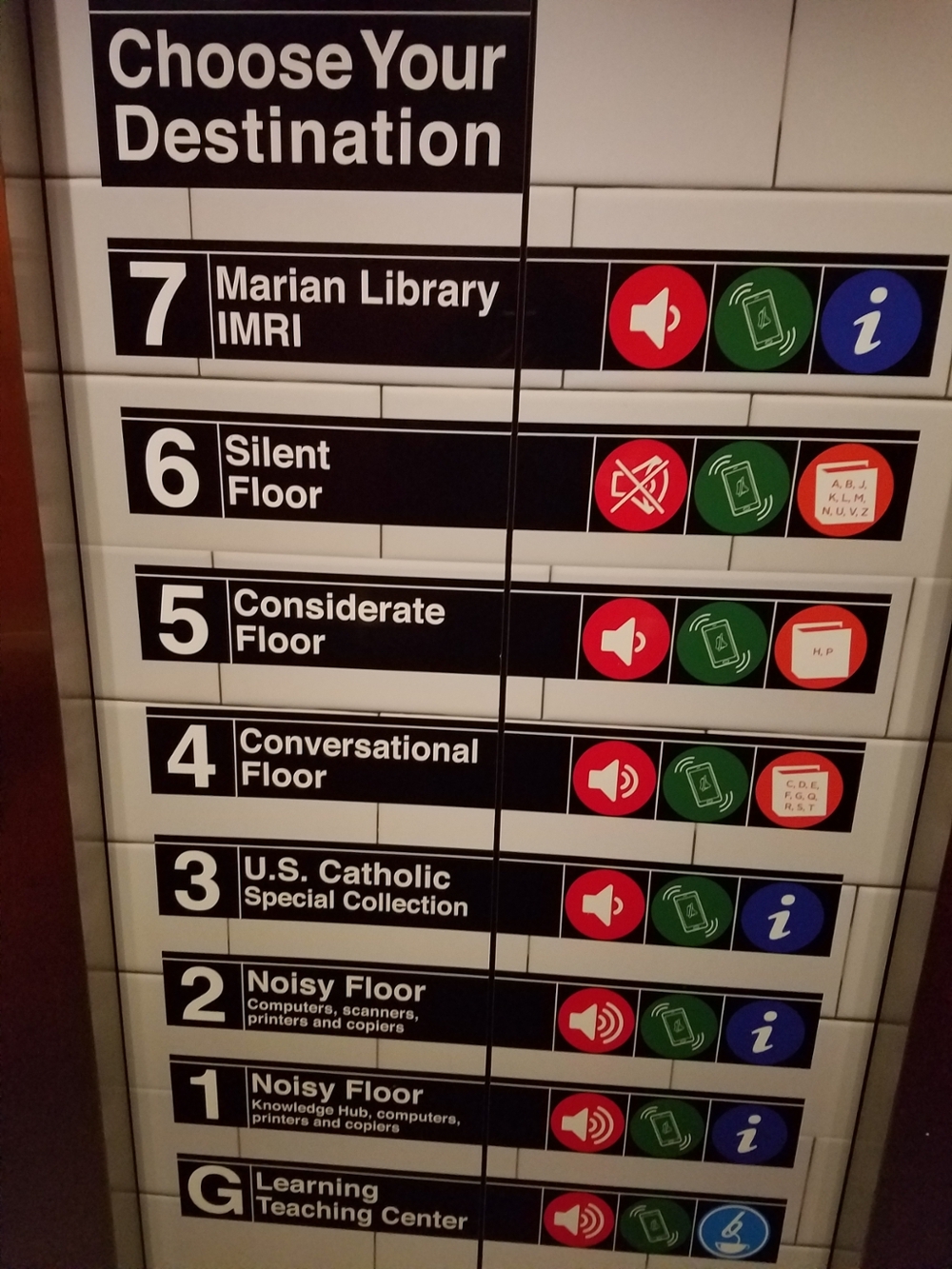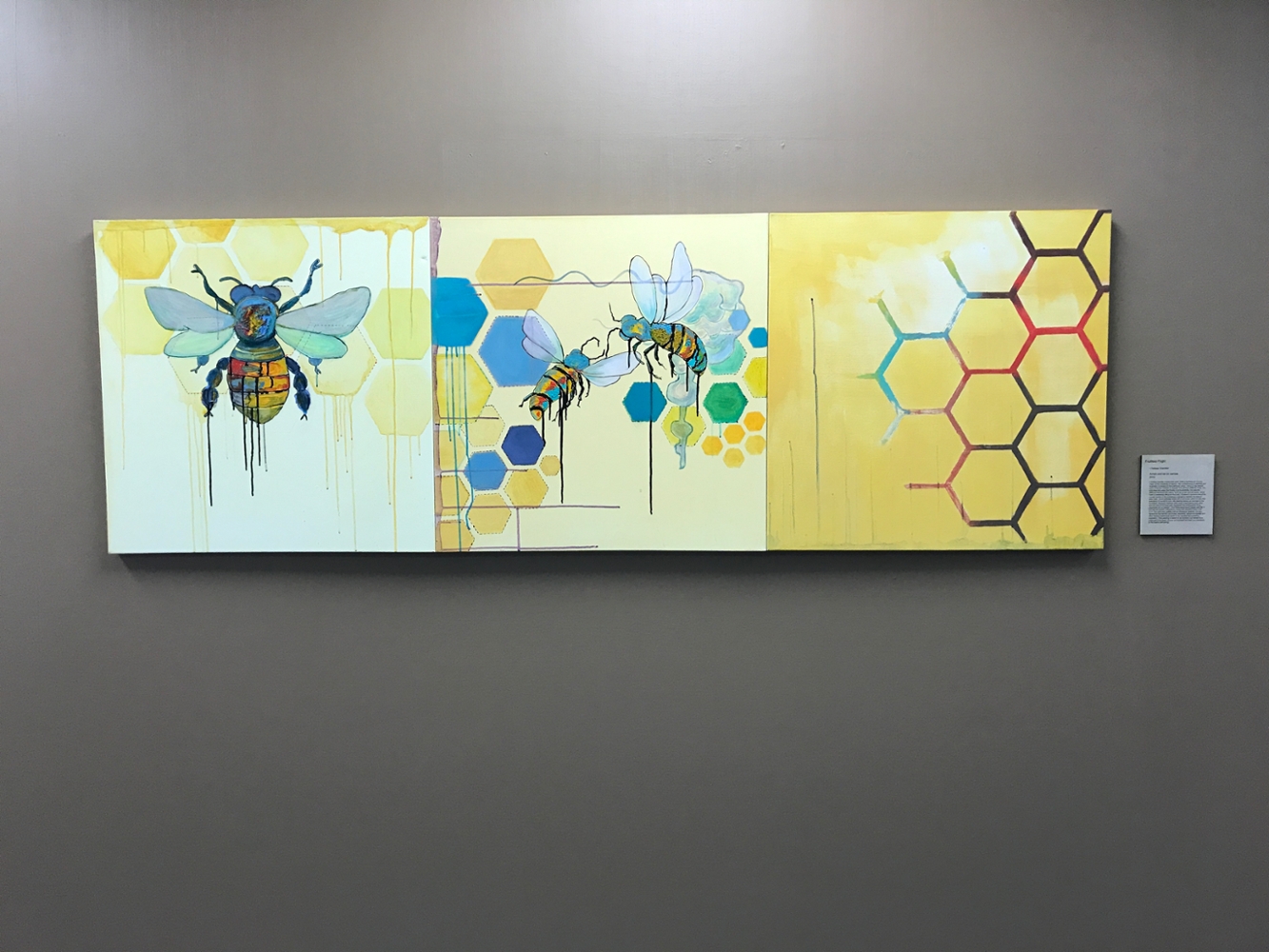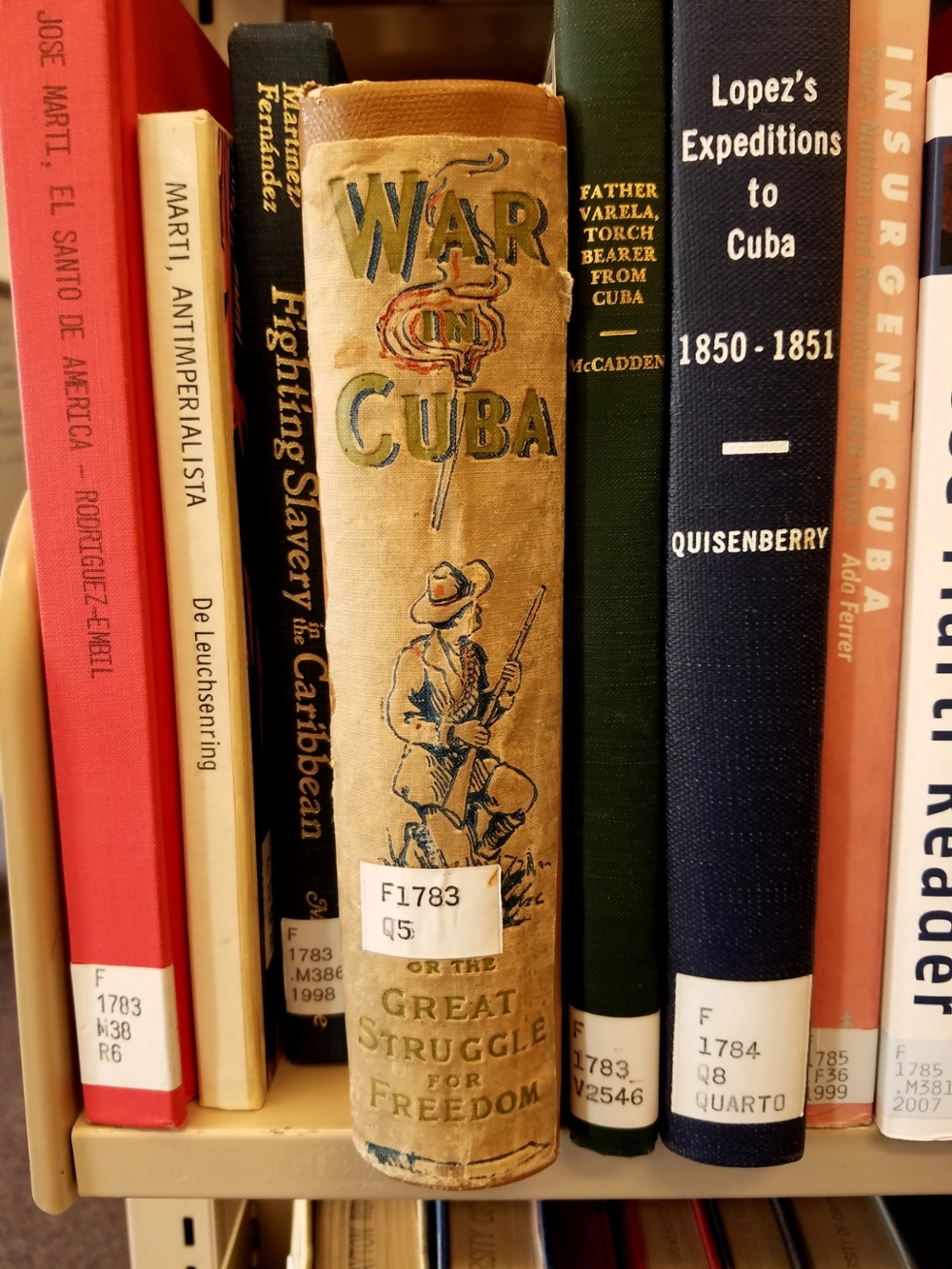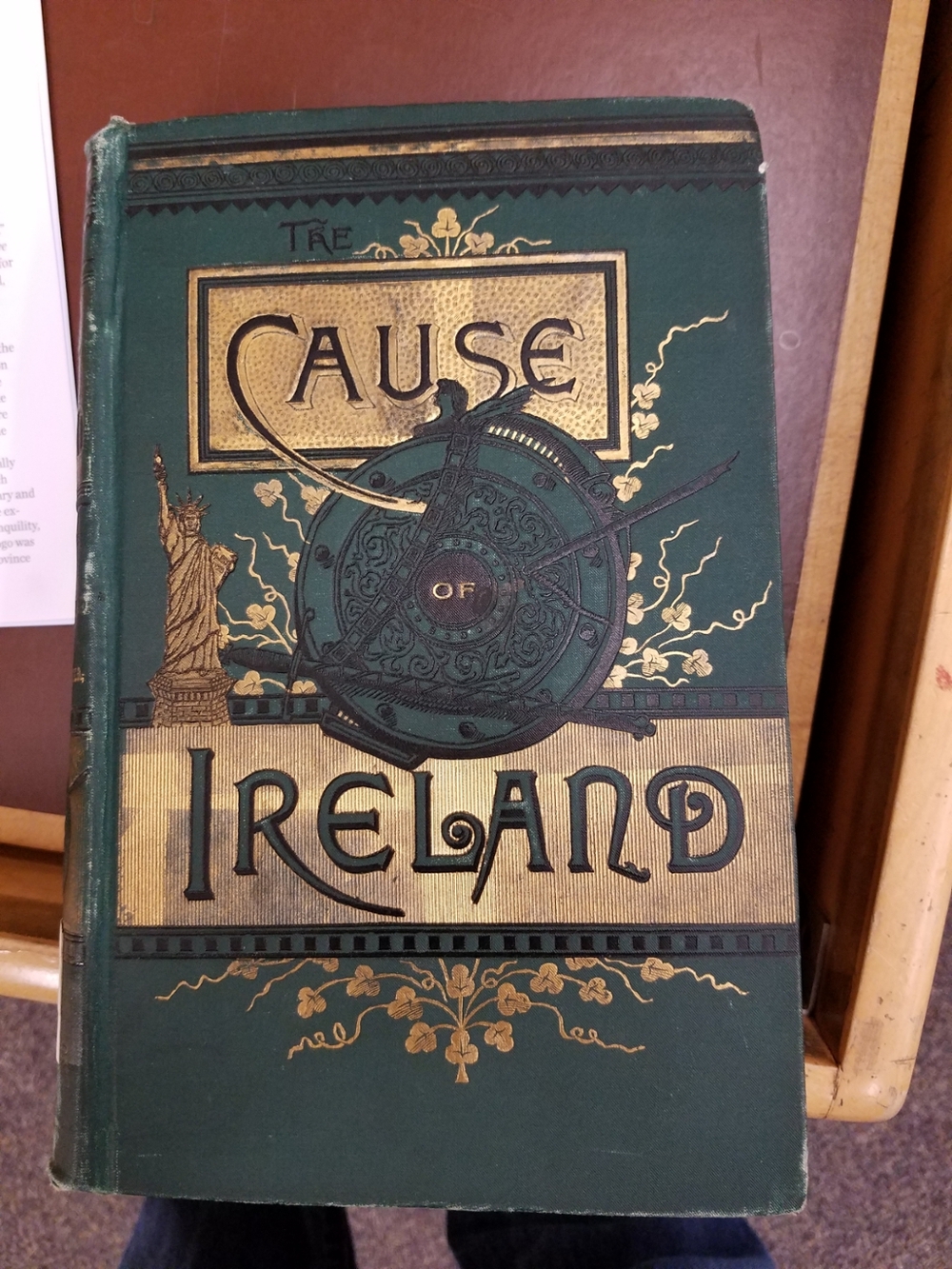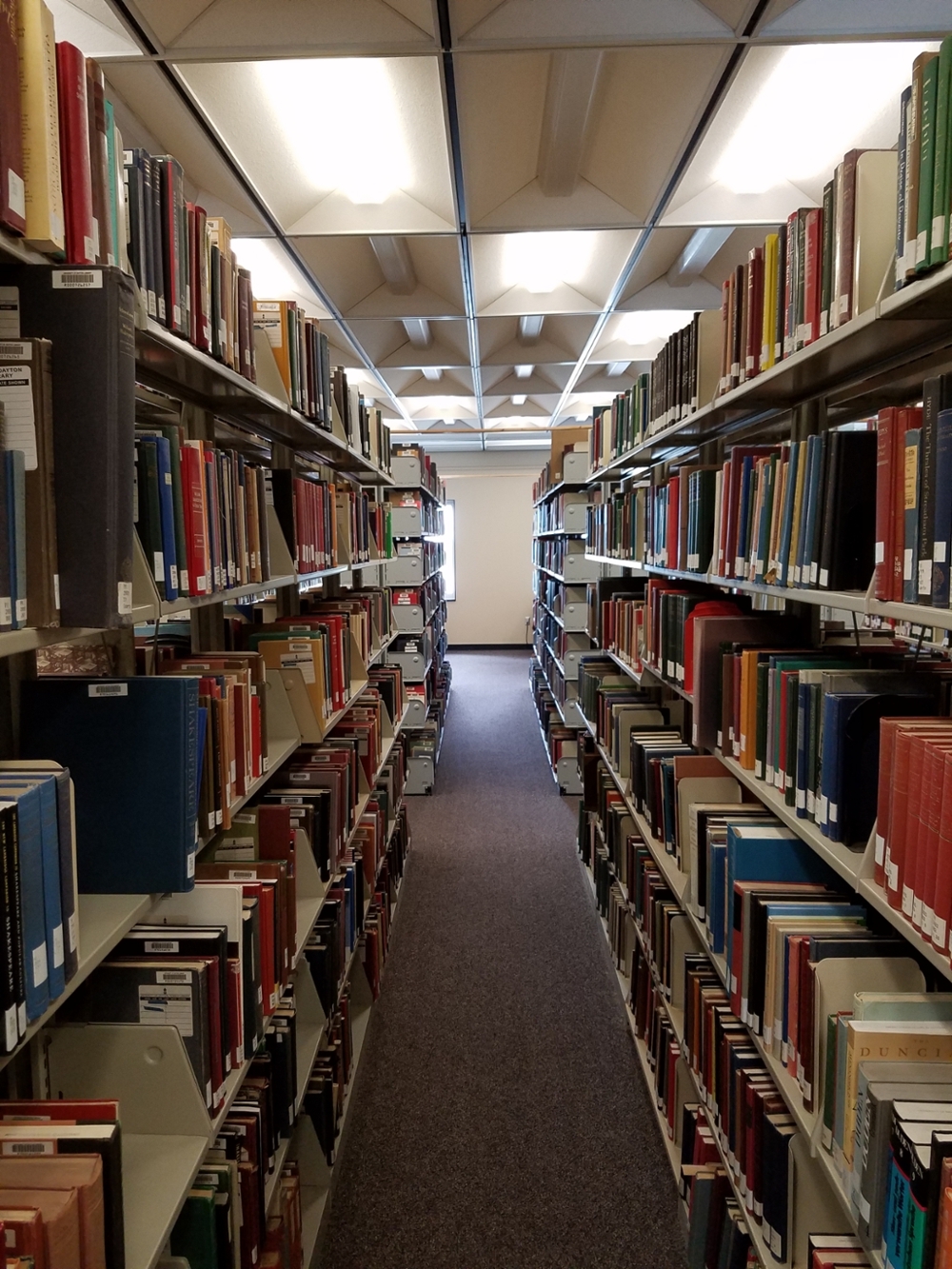University Libraries
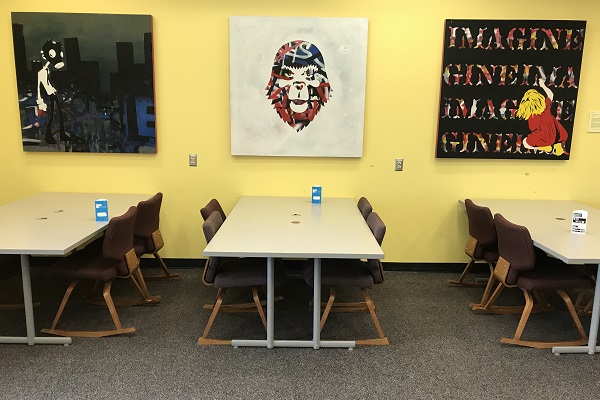
The Museum of Books: Art in Roesch Library
By Adam Schwartz
The Oxford English Dictionary defines Art as: “The expression or application of creative skill and imagination, typically in a visual form such as painting, drawing, or sculpture, producing works to be appreciated primarily for their beauty or emotional power.” With this in mind I was tasked with finding four pieces of art in Roesch Library that I would consider to be my favorites. Well, anyone who knows me well understands that I love art. If you check out my instagram account (adamgschwartz), you will find that a good chunk of my posts pertain to my visits to various art museums. So, it was tough to decide on just four.
When I went a began looking, I thought to myself, “What exactly is art?” — my dilemma being whether I only consider pieces of art that are labeled and hung on the walls, or whether I also consider sculptures, doors, hallways, books, or even glass-encased nuns. Technically speaking, the books are ‘art on display’ in a sense. So the four pieces of art I chose are not all what one would consider traditional art.
The first piece of art I would like to discuss comes from … well, any floor, really. That being the elevator. Specifically, the interior doors of the elevator. The elevator door, in my opinion, has one of the most helpful pieces of art on display in the library. Emulating the New York City subway station signs, the elevator doors are both aesthetically pleasing and practical. The small red, green, blue and orange signs to the right of the floor numbers tell students how loud the floors are, what the range of books is on that floor, and what amenities are available there. It adds a bit of fun to the library experience both artistically, and practically.
The second piece of art I would like to discuss is one in a series entitled, Graffiti, located on the sixth floor.
This piece depicts the face of a primate with a background of graffiti. What I like about this work is the use of the negative space to compose the primate’s face; the graffiti reveals the outline. The stark contrast between the white of the outer edges of the canvas with the red, white and blue interior gives a great illusion of depth to the painting. The other aspect of the painting that interests me is the almost rebellious nature of the piece. The setting is of course a university library. Street art and graffiti primates to not usually spring to mind when thinking of libraries. Yet, here it hangs, along with two other graffiti-like paintings not shown here. Perhaps it will provide some inspiration to students to get outside of the classroom for learning, or maybe it will provoke interests in questioning society. Who’s to say? I’m just a history major with a penchant for good-looking art.
The next piece of art I want to discuss is a piece found on the fourth floor entitled Fruitless Flight. The piece consists of a splayed honeybee, two smaller honeybees,
And a rainbow honeycomb pattern on a yellow background. What I like so much about this painting is the color scheme and the placement. The color scheme of course is a bright yellow, with variations of lighter and darker yellows as the piece goes from left to right. The placement is right off of the elevators toward the stacks and the work tables. The subject, the bee, is known for being a hard worker, building colonies and producing honey for the queen bee and for the hive’s protection. The bee is a good reminder to students who might need motivation going into an all-nighter during finals week. If a small bee can build a whole hive/colony, then that student can certainly write a paper on existentialism from the perspectives of Descartes and Nietzsche.
The fourth piece of art I would like to discuss maybe a bit cliche, but I had to put this in here: the books. Yes, the books. I snapped a few of my favorite looking books, and the stacks themselves just to prove that books, while a more written medium, can still have qualities of the visual arts. If you think about it, an art museum can give information on how people lived, what techniques of painting and trade were in existence, what has persisted, and what needs to change in society and in various other aspects of life. Libraries can also do this for you; mind you, the information is stored in books, rather than in paintings and through sculpture, but in the end, they don’t have that much difference. A library is a museum of knowledge, and the art, both visual and written, can change your life, even if for only a moment.
- Adam Schwartz, a senior, is a library student employee in the Knowledge Hub.

